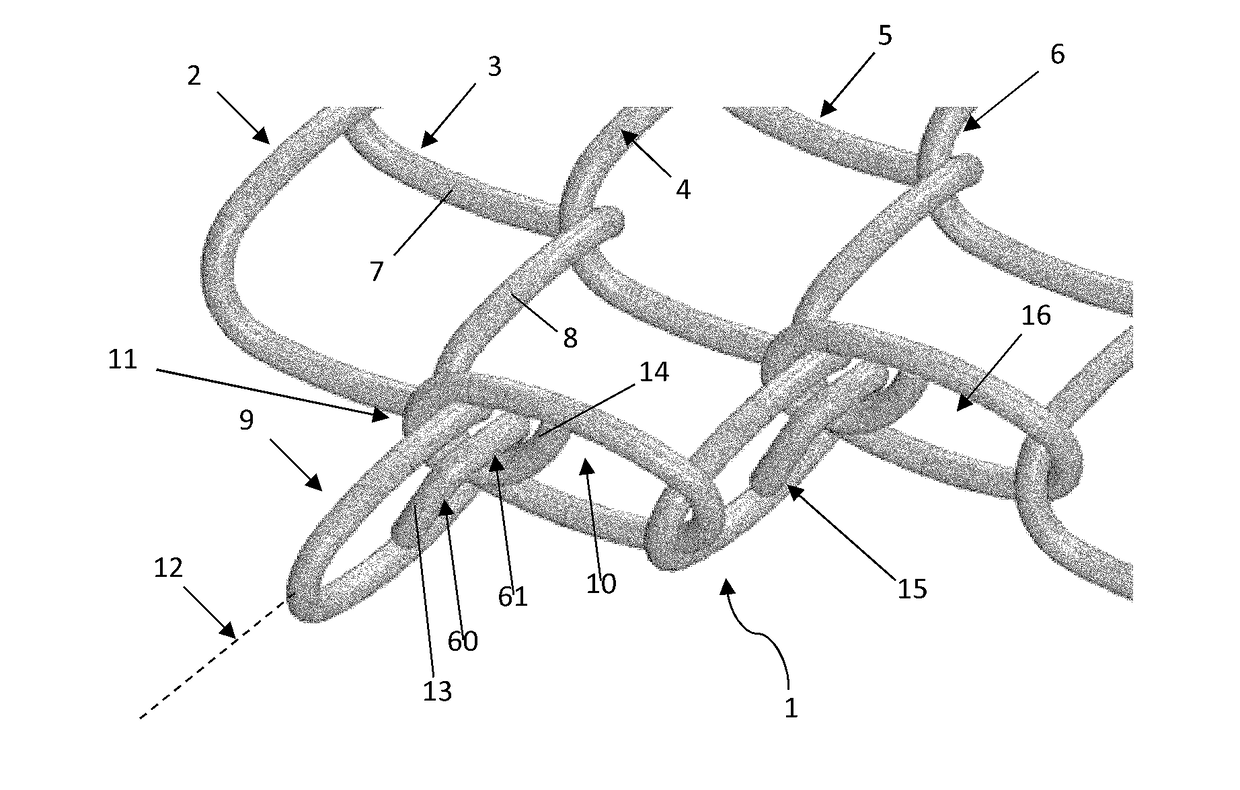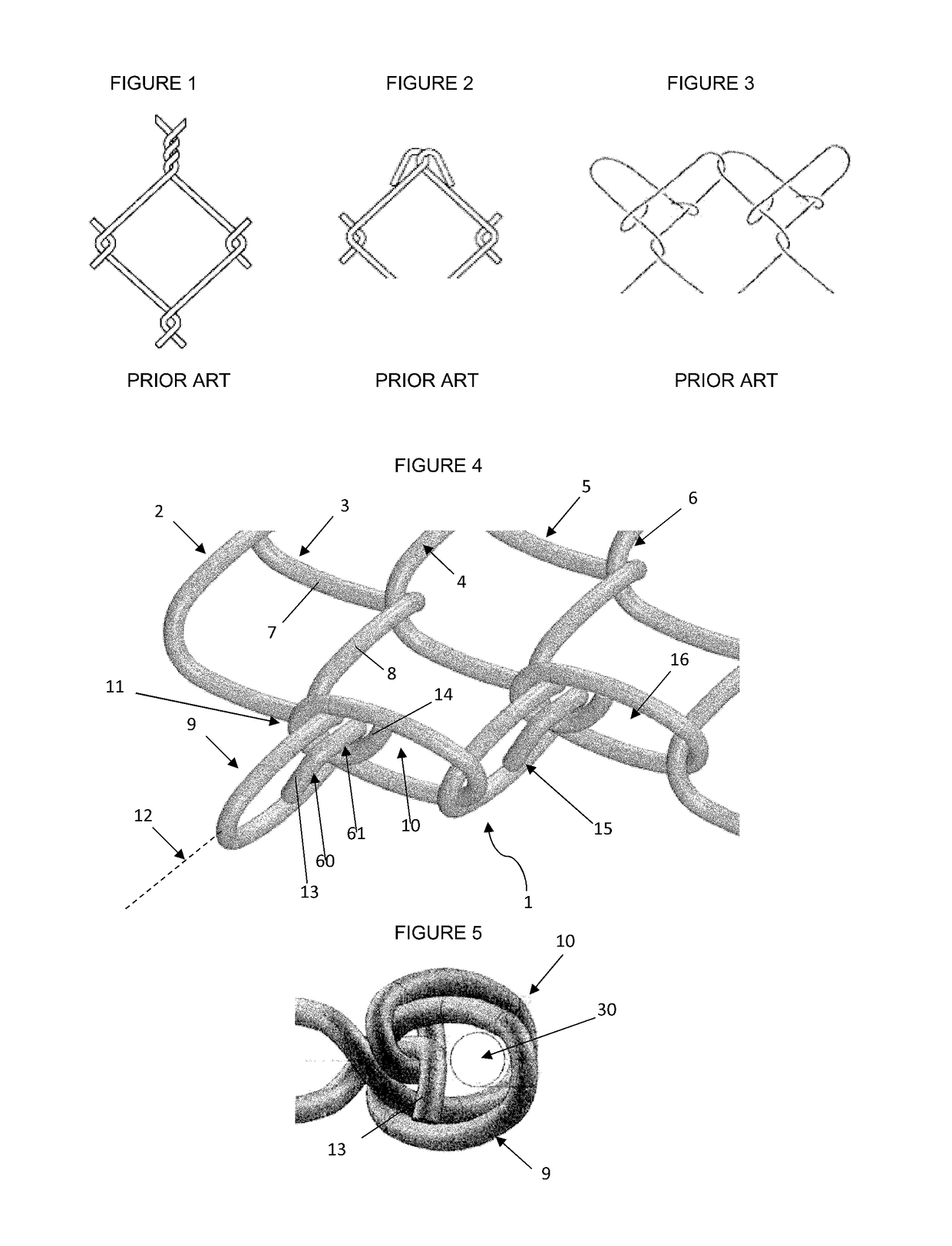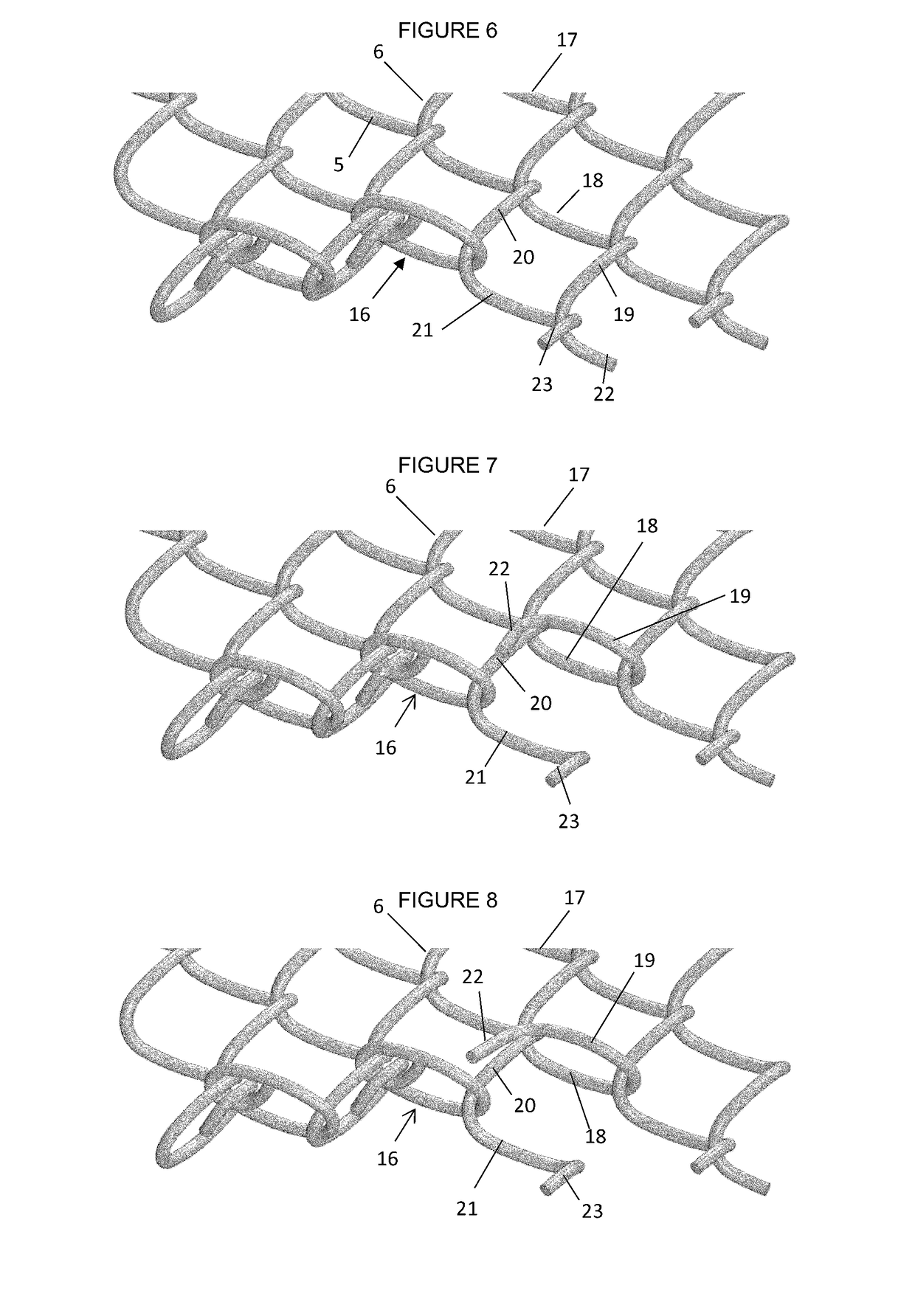An Edge Finishing For a Mesh
a mesh and edge technology, applied in the field of edge finishing, can solve the problems of reducing the safety of the edge, and causing a significant safety concern, and achieve the effect of increasing safety and little or no spacing
- Summary
- Abstract
- Description
- Claims
- Application Information
AI Technical Summary
Benefits of technology
Problems solved by technology
Method used
Image
Examples
Embodiment Construction
[0068]An edge finishing for a diamond pattern wire mesh according to a preferred embodiment of the present invention is generally indicated by arrow 1 in FIG. 4. The mesh is formed in a diamond pattern (this being the separation of parallel sides of the diamond pattern). The mesh is formed from interlacing pairs of adjacent pickets (2-6) where each picket is in the form of an elongate strand of wire bent at regular intervals into a zig-zag configuration (see for example the adjacent sides (picket end lengths) 7 and 8 of picket 3).
[0069]The edge finishing comprises two interlinked loops, generally indicated by arrows 9 and 10 on the left hand side of FIG. 4, where the first loop 9 is formed from a first picket 2 and the second loop 10 is formed from a second picket 3 (which is adjacent to picket 2). The first loop 9 and the second loop 10 are interlocked together at an intersection 11 of the first picket 2 and the second picket 3.
[0070]The interlocking of loops 9 and 10 is achieved b...
PUM
 Login to View More
Login to View More Abstract
Description
Claims
Application Information
 Login to View More
Login to View More - R&D
- Intellectual Property
- Life Sciences
- Materials
- Tech Scout
- Unparalleled Data Quality
- Higher Quality Content
- 60% Fewer Hallucinations
Browse by: Latest US Patents, China's latest patents, Technical Efficacy Thesaurus, Application Domain, Technology Topic, Popular Technical Reports.
© 2025 PatSnap. All rights reserved.Legal|Privacy policy|Modern Slavery Act Transparency Statement|Sitemap|About US| Contact US: help@patsnap.com



